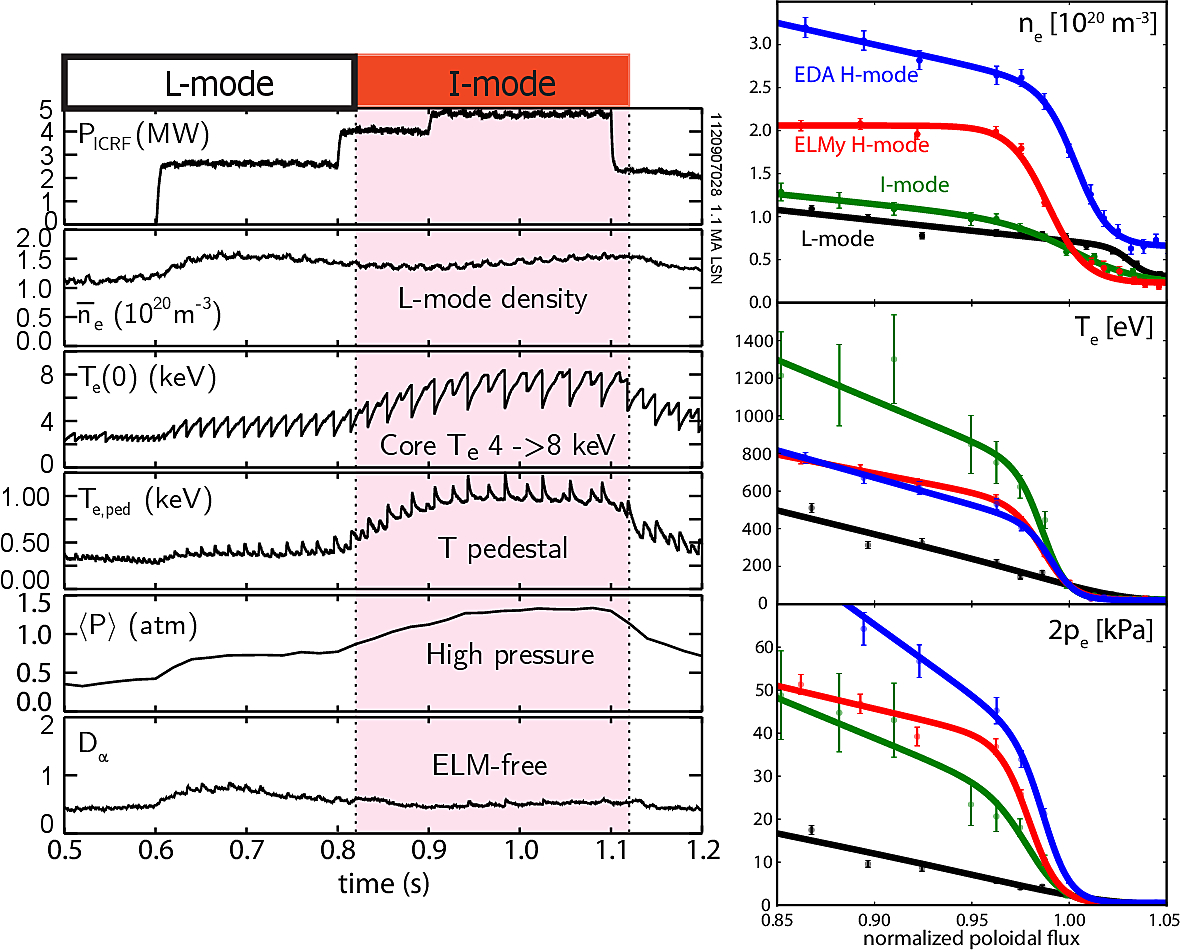John Walk
I-Mode
The formation of the pedestal in H-mode is essential to high-performance operation in tokamak fusion reactor designs. However, H-modes present the difficulties of avoiding the accumulation of impurities in the plasma (which cause excessive radiative energy loss) and the appearance of large ELMs, which can exceed wall-material tolerances on reactor-scale devices.
The I-mode is a novel high-performance regime pioneered on the Alcator C-Mod tokamak at MIT, unique in that it apparently decouples energy and particle transport, forming a pedestal in temperature (with improved energy confinement) without the accompanying density pedestal or reduction in particle transport. This leads to a number of potential benefits for a reactor:
- due to the lack of suppression in particle transport, the I-mode readily vents impurities from the plasma, allowing stationary operation with low radiative power loss, even with heavy metal wall components (which are required for high-power operation, but typically lead to increased radiative losses)
- naturally stable against large ELMs, allowing high-performance operation without pulsed heat loading to wall materials without externally-applied engineering controls
- good energy confinement that appears to degrade only weakly with increased heating power, compared to conventional H-mode

I-mode is accessible mainly by inverting the magnetic geometry - a modification that had previously been shown to increase the power necessary to access H-mode by roughly a factor of two, but on C-Mod it was found to open an “intermediate” (hence the name) power range for the new operating scenario. I-mode operation is still quite new, and experimental - accessing the regime on other tokamaks is a major focus of current research.